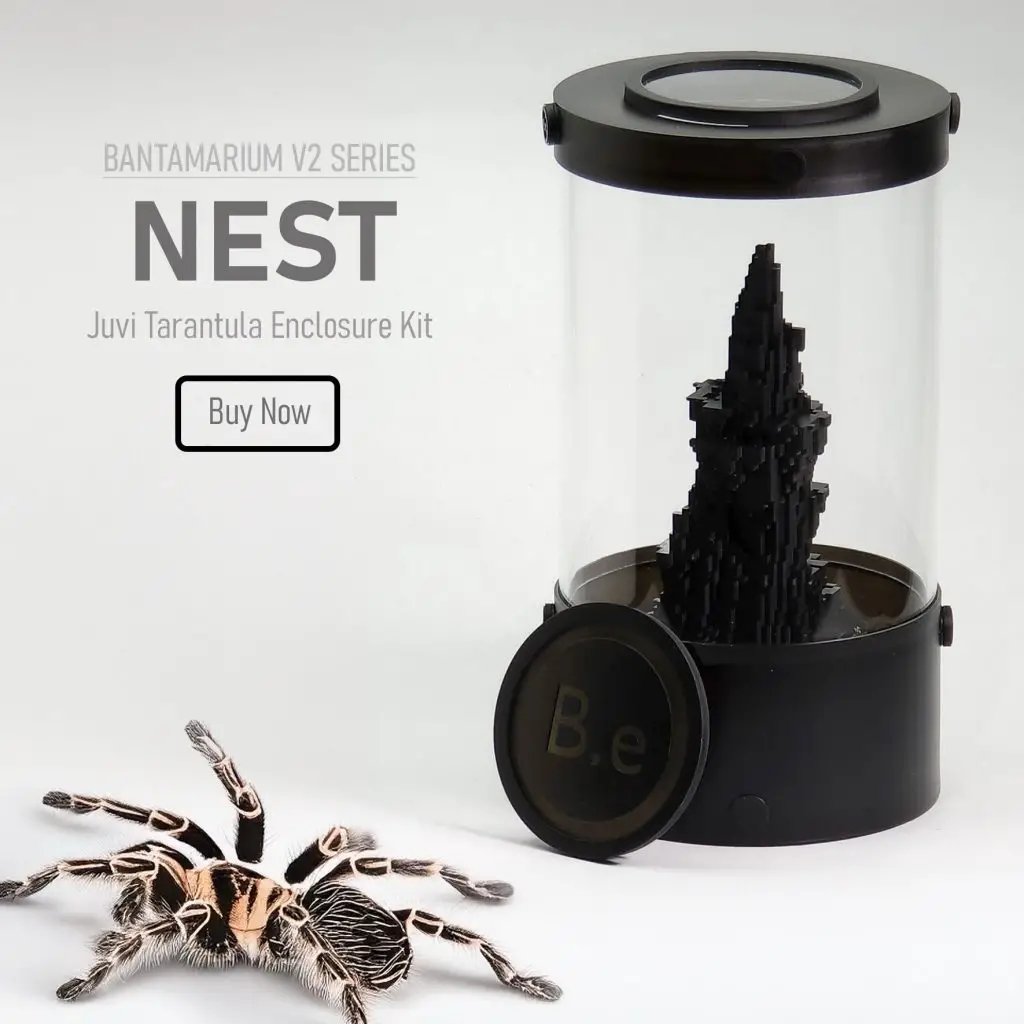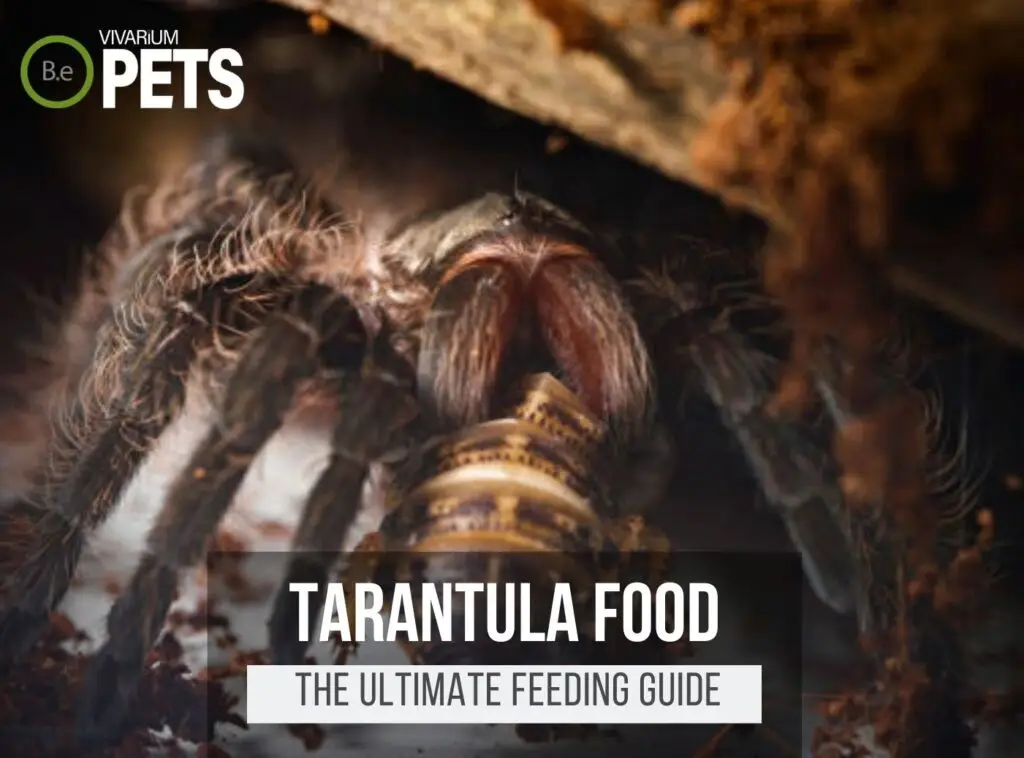Are you getting ready to welcome a Texas Brown Tarantula into a new enclosure?
These friendly, low-maintenance arachnids make great pet tarantulas and can offer years of companionship!
In this guide, you’ll learn all about proper housing, feeding, and care tips to ensure Aphonopelma hentzi remains at its peak predator state.
Let’s get started!
Table Of Contents:
ToggleWhat Are Texas Brown Tarantulas?
Aphonopelma hentzi is an arachnid belonging to the family of spiders known as Theraphosidae.
Unlike other types of tarantulas we’ve covered, they are naturally found in the southern United States.
Its common name refers to its predominantly brown body and the state of Texas, the area where the species is most commonly found.
These hardy spiders are relatively docile and can live for up to several years with proper care.
Create the perfect home for your arachnid with our Customizable Spider Enclosure Kits, designed to meet all their habitat needs.
What Do Texas Brown Tarantulas Look Like?
Texas Brown Tarantulas are a medium-sized species, typically ranging from 1.4-2 inches in body length, with a leg span of up to 4 inches.
Their long bodies and legs are usually light-brown or gray-brown and can be covered in fine, velvety hairs.
The carapace and abdomen of this species are both broad and flat.
They have eight multi-faceted eyes arranged in two curved rows.
This species is distinguished by a hook and groove spine arrangement along the back of its body.
To complete their anatomy, they have two very large pedipalps, which are used for communication, feeding, and sensing.
Additionally, they also produce silk from their spinnerets, which aids them in burrowing and foraging.
Finally, one of the most striking features of Aphonopelma hentzi is its impressive set of eight large, claw-tipped legs.
Benefits Of Using Texas Brown Tarantulas
Texas Brown Tarantulas are a great choice for vivariums because they are hardy arachnids that are easy to care for.
They are also relatively docile and easily handleable, making them an ideal pet for novice keepers.
While the proper temperature and humidity level must be maintained, as with any pet, they can thrive with the right setup.
setups like terrariums, provide a secure and enclosed space to keep your tarantula safe and healthy, with plenty of room to roam and explore natural substrate and décor.
Plus, these arachnids are known to put on a great show for the spectators, in terms of their capabilities and behaviors like burrowing and predatory moves!

Texas Brown Tarantula Facts
Aphonopelma hentzi is a small, docile tarantula with a mild brown to dark brown coloring.
They typically feed on insects and can survive for many years in the wild.
They are generally quite sedentary and difficult to breed in captivity, but they make suitable and often rewarding pets for dedicated keepers.
Habitat
Texas Brown Tarantulas are native to the southwestern United States, specifically the regions of Texas, New Mexico, Arizona, and Louisiana.
These tarantulas are well-adapted to the hot and dry ecosystems of their native regions, which generally feature a combination of desert, grassland, and woodland habitats.
They can be found living in burrows and hiding in nooks within trees, rocks, and other objects.
Replicate their natural habitat perfectly with our bioactive species-specific soil mixes, designed to provide the ideal moisture and organic content for your spiders.
Diet
In its natural habitat, Aphonopelma hentzi is mainly an ambush predator, which means that it typically feeds on prey that passes nearby.
Its diet mainly consists of insects, such as grasshoppers, crickets, and beetles, as well as small vertebrates like small lizards and rodents.
It also eats small birds, amphibians, and other arachnids if they come its way.
It should also be noted that Texas Brown Tarantulas are not afraid of scavenging for dead prey.
This means they may feed on roadkill or other dead animals. In general, the tarantula prefers live prey.
Temperament
Texas Brown Tarantulas are docile and used to being around humans, so they are easy to handle.
They make great pets since they don’t require much attention, although they do require a safe and comfortable environment to thrive.
These tarantulas do not require any particular companionship, except for their kind during mating season.
If you plan on giving Aphonopelma hentzi a companion, be sure to supervise and monitor them closely.
This will help to ensure that the other animals aren’t causing any undue stress or discomfort to your beloved pet tarantula.
Be sure to provide plenty of hideouts for both your tarantula and their companion to reduce stress levels.
Lifespan
Aphonopelma hentzi typically live to be around 8 to 12 years old as males when properly cared for, with females notably living as long as 30 years!
These tarantulas live solitary lives and go through the typical tarantula life cycle of eggs, spiderling, juvenile, and then adult phases.
At the egg stage, a female will lay eggs in a burrow and guard them until they hatch.
Her job done, the mother will abandon the burrow, leaving her babies to fend for themselves.
They will go through several molts before maturing into adults and will then seek out their burrows.
Texas Brown Tarantulas typically reach their full adult size around 6-18 months and will spend the majority of their lives in their burrows, only coming out to hunt or molt.
Daily and seasonal habits vary but their long and often solitary lifespans ensure that a tarantula can often bring a quaint and calming ambiance to any home.
Breeding
Mating season for Texas Brown Tarantulas typically occurs during the summer months.
Males will wander in search of a mate and will use particular body language to communicate with female tarantulas.
The female will then either accept or reject the male’s advances and mating will begin when he is welcomed.
Where To Find Texas Brown Tarantulas
If you are looking to purchase Aphonopelma hentzi, you will likely find them available through pet stores that specialize in reptiles and arachnids.
You can also check online retailers and some breeders may offer them for sale.
It is possible to find a Texas Brown Tarantula in the wild, although it is worth noting that, unless you have experience catching and handling spiders, it is best to acquire them from a pet shop.
Wild-caught spiders can sometimes carry parasites and diseases that may not be found in captive-bred specimens.
If you are lucky enough to live in an area where these tarantulas occur naturally, you can find them in the burrows they make in the ground.
Be sure to carefully monitor and inspect the spider before handling it.
Carefully observe the spider’s behavior and ensure that it is healthy before handling.
It is also good to note that, as these tarantulas can produce mild venom, you should always handle them with care.
Texas Brown Tarantula Care
To care for Texas Brown Tarantulas, you need to provide them with a temperature- and humidity-controlled environment, adequate terrarium lighting, and a proper diet.
Additionally, it’s wise to handle your tarantula gently, groom them regularly, and avoid placing them with other pets or companion insects.
Lastly, watch out for signs of stress and other potential health issues.
Tank Requirements
When setting up a tank for Aphonopelma hentzi, be sure to choose an appropriate-sized vivarium made from breathable materials.
Opt for an enclosure with a semi-transparent or glass lid to provide the tarantula with plenty of ventilation and light.
The best pH for this species should fall between 6.5 and 7.5, with water hardness around 50-150 ppm.
The temperature should be set between 70 and 80 degrees Fahrenheit.
The terrarium substrate should be 5 to 8 inches deep.
Be sure to use a substrate made specifically for tarantulas.
Finally, when it comes to lighting, it’s best to use full-spectrum light to mimic the behavior of a nocturnal animal.
What Do Texas Brown Tarantulas Eat?
Building a healthy and well-balanced diet for your Texas Brown Tarantula is an essential part of their care.
They eat a variety of food items, including crickets, mealworms, waxworms, and roaches.
You should offer them a variety of these foods as part of their weekly diet to ensure a balanced nutrient intake.
Here are some tips to keep in mind when feeding Aphonopelma hentzi:
• Offer a variety of sizes of food items depending on the size of your tarantula.
• Dust feeds insects with vitamins and minerals, such as calcium, zinc, and magnesium, to ensure your tarantula is getting enough of these important nutrients.
• Feed your tarantula twice a week and remove any uneaten food items to avoid death from overfeeding.
• Provide a shallow water dish for hydration.
• Avoid overfeeding, as this can cause obesity and other undesirable health issues.
If you’re looking for a more detailed approach to feeding these arachnids, be sure to check out my ultimate DIY tarantula food guide. I give a more in-depth explanation of the best foods and my favorite recipe.
Best Tankmates For Texas Brown Tarantulas
Care should be taken when introducing tankmates to Texas Brown Tarantulas as they can be territorial.
Larger species of spiderlings and other tarantula species can be kept together in the early stages of life, however, they should be moved into separate enclosures once they reach adulthood.
Possible compatible invertebrates are pet isopods, millipedes, and ground roaches.
All of these animals are easy to care for and require similar environmental requirements as Aphonopelma hentzi.
They also make great co-habitants, as they produce minimal waste.
Keep in mind, however, that no two animals are alike, and compatibility should be carefully considered when introducing a new pet into a home.
Conclusion
Congrats! You now know what it takes to provide a safe and comfortable home for your Texas Brown Tarantula.
With the right temperature, humidity levels, diet, and care, you can keep your tarantula in great health for many years to come.
We hope you enjoyed this guide and wish your new pet a long and fruitful life!
Create the ideal habitat for your arachnids with our species-specific soil mixes and Spider Enclosure Kits. These products provide everything you need for a thriving spider habitat.
Frequently Asked Questions
Yes, Texas brown tarantulas are venomous. Their venom is not considered very dangerous to humans, but it can produce discomfort and pain.
Yes, Texas brown tarantulas are usually docile and unlikely to bite unless provoked.
Male Texas brown tarantulas can reach a body length of up to 3 inches, while female Texas brown tarantulas can reach a body length of up to 4 inches.
Texas brown tarantulas are found in south–central Texas in the US. They can usually be found in rocky areas or in woodlands.
While Texas brown tarantulas are generally not aggressive, it is not advisable to pick them up in the wild. They can become stressed and may bite if they feel threatened or mishandled.
Texas brown tarantulas are typically not aggressive toward humans and prefer to retreat rather than attack. However, if they feel threatened or provoked, they may exhibit defensive behavior, such as rearing up on their hind legs or biting.







